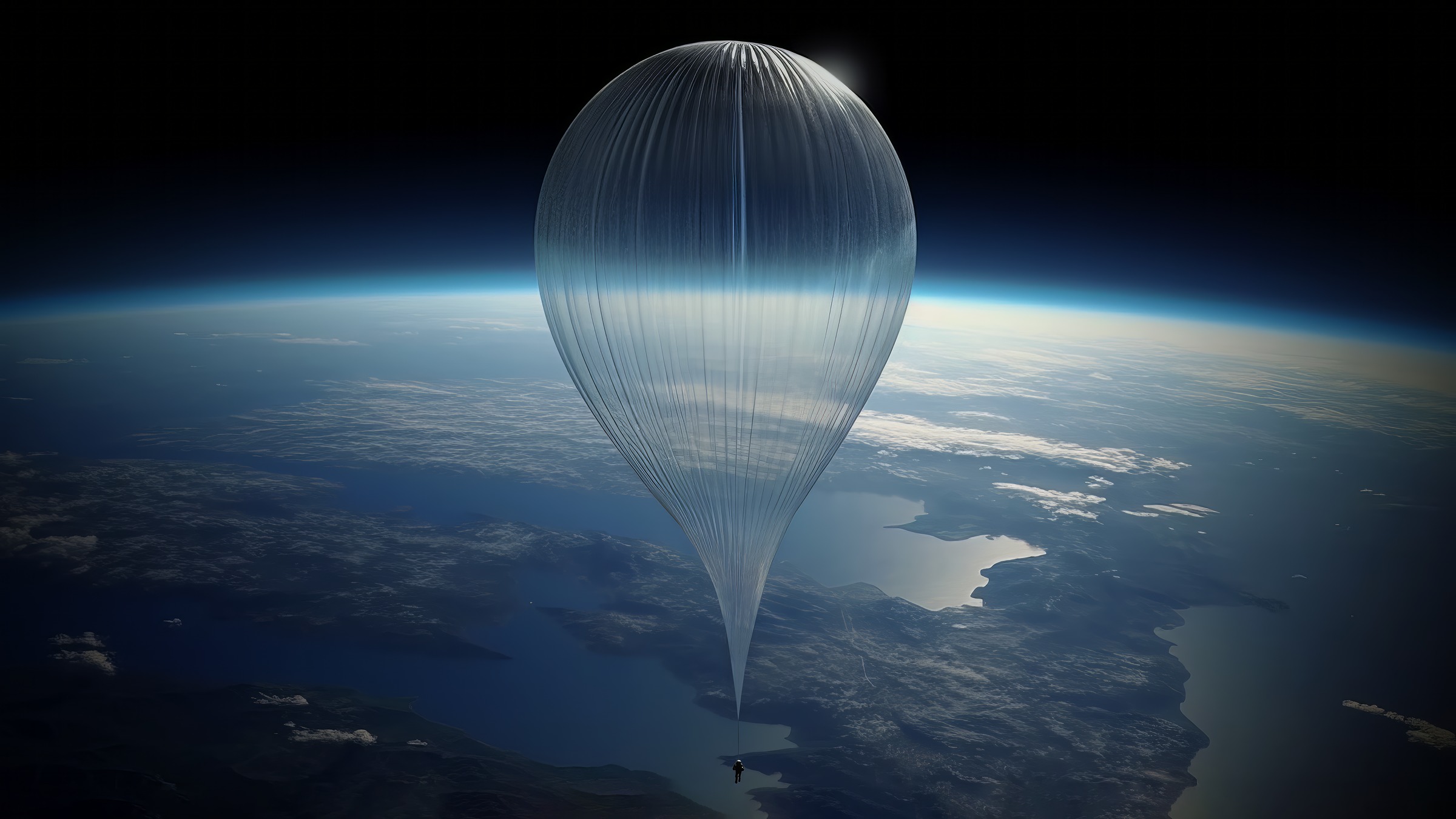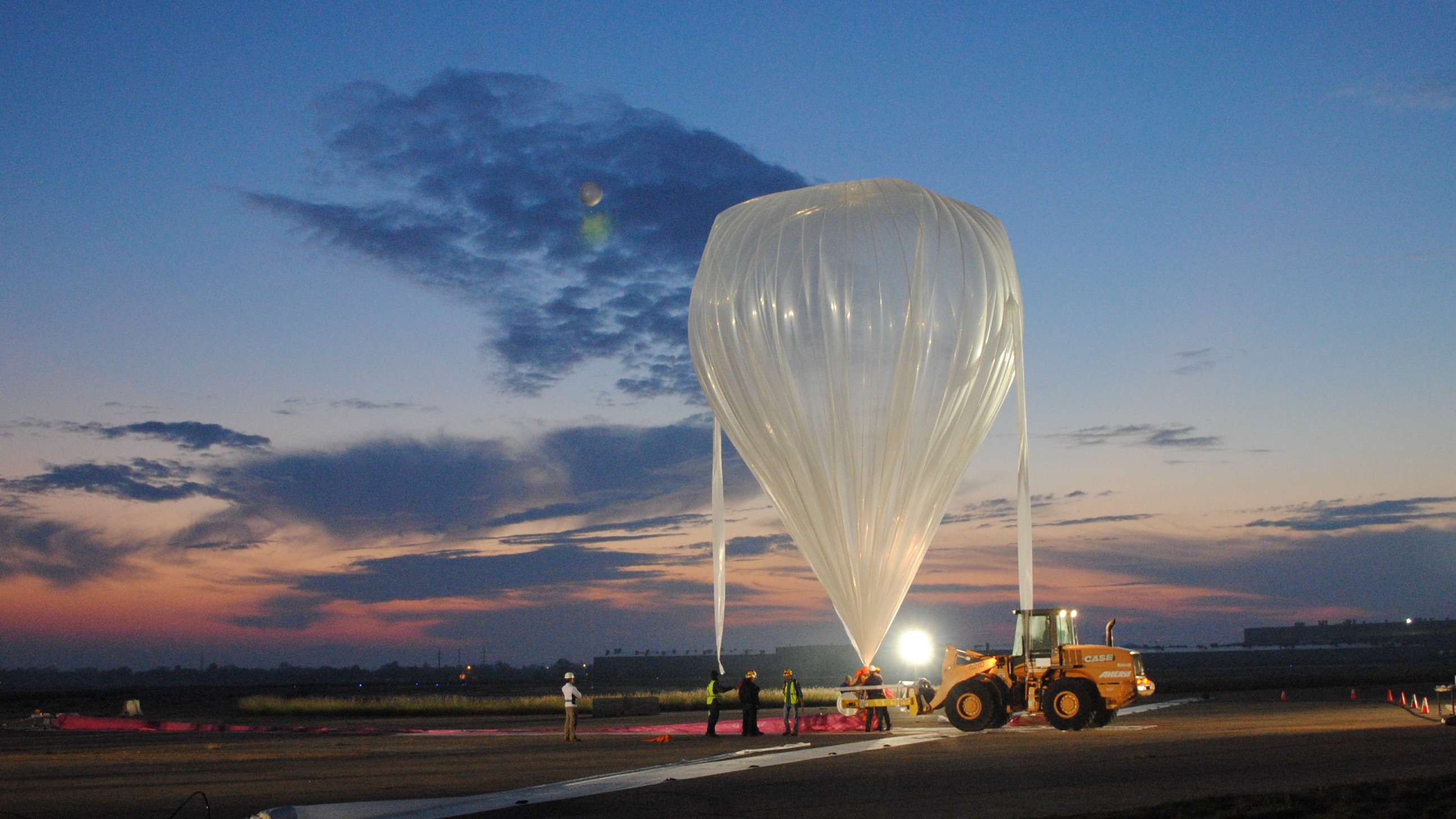This daring skydiver could be the 1st woman to jump from Earth's stratosphere. Here's how she plans to do it (exclusive)
'It will involve a series of high-altitude jumps, going higher and higher and higher.'

Swati Varshney has spent decades strapped into parachutes. Now, she's helping to bring a woman skydiver higher than ever before.
Varshney, who has 1,200 career jumps along with a Ph.D. and ancestry in India, is one of three "explorers" on the Hera Rising project. The initiative by non-profit Rising United plans to send a woman high into Earth's atmosphere for the first time.
The other two finalists for the stratospheric opportunity are Eliana Rodriquez (who has ancestry in Colombia) and Diana Valerín Jiménez (ancestry in Costa Rica). The selectee will be determined after 18 months of training; the other two explorers will remain on the team for ground support and educational outreach.
Hera Rising aims to break barriers in gender and representation and is producing ample educational materials in Spanish and English. They also will have considerable technical expertise on the team. For example, the equipment will largely be provided by Paragon Space Development Corp., which has helped in previous record-breaking skydiving. It is also part of a team led by Axiom Space that will outfit spacesuits on NASA's Artemis program for astronauts aiming to land on the moon in the 2020s.
Space.com spoke with Varshney about her career so far, what she expects to learn and what this historic opportunity means to her.
Related: Hera Rising will attempt the 1st stratospheric skydive by a woman in 2025 (exclusive)
Space.com: Tell us about your skydiving journey.
Breaking space news, the latest updates on rocket launches, skywatching events and more!
Varshney: My academic progression and my career trajectory has been really intertwined with skydiving as it went along. So I started skydiving. I just did a tandem skydive as a thing to do to check off your bucket list, right? And I went and did it and I had an absolute blast. I had so much fun doing it. I felt really comfortable in freefall. I loved it, but I wanted to go back and pursue this as something cool to do as a hobby. I had been accepted into my master's degree program at Cambridge and on track to get to do my Ph.D. at MIT.
I really just wanted something that was totally different, and as a release to — this is a really cliché way to say it — cut away right from what I was doing in my day-to-day life. I started doing my license, my training, learning more about the sport, learning that there were so many different avenues for progression and things to do. And I learned a lot about how technical body-flying in the sky really is.
It grew to be something that was a lot more similar to my scientific training than I ever thought it would have been in the first place. It was just another avenue for me to pursue this goal of lifelong learning. There's more disciplines to try, there's more events to go to, there's competitions. It became this never-ending journey of another pursuit of knowledge that went alongside my academic career.
Space.com: How did you get involved with Hera Rising?
Varshney: The project founders reached out to some folks in skydiving to figure out who some good candidates for this project would be. They had some criteria. They wanted it to be a woman, preferably with a STEM (science, technology, engineering and math) background, and an underrepresented minority. It was series of interviews and conversations with that team and figuring out how this was all going to work, and then learning about me in terms of, what are my interests? Am I doing this for the right reasons?
Over the course of this I also met my teammates, the two other explorers that have been chosen for this project. I met Diana and Eliana, when we went down to Houston to try on spacesuits. And that was a really incredible experience. I was wondering (if it was going to feel like) all three of us are competing to be that one person who's going to jump from space. But no, it was more like we're a team of three women who are going to make this happen.
It was great. I've seen in my academic career, where there's a difference between when it comes working as a team and camaraderie in a lab, and getting a project done — versus a hyper-competitive environment where it's one person's glory to have their name as the first author on the paper.
Space.com: What is your team's journey to the flight?
Varshney: There's different components of it from the spacesuit design. There's the training that the explorers, myself included, will have to go to to prepare for the event. And then there's a whole bunch of research that's going into the platform design, what's actually going to carry us up to space, and some of the experiments that are going on, and of course the educational side.
It's going to start with some some suit sizing and fitting. There's some different concerns that the (pressure) suit designers need to take into account to fit any one of the explorers. We're all women. We're smaller than the average (male) astronaut. This is something we learned when we went to try and the suits. The suits were all just a little too big for us. Their joints were kind of in the wrong place to fit our bodies. We have limited ranges of motion; just even raising our arms and looking at the shoulder joint, or the size of the gloves to use our fingers to work some of the adjustments and the dials on the suit.
When it comes to training for the jump, I think there's a lot that's going to go into it. We'll need to do high-altitude training, in terms of groundwork and altitude chambers, and learning how to control your body and use your body in in high-altitude environments. Then there's also jump training. I think it will involve a series of high-altitude jumps, going higher and higher and higher.
Space.com: What do you hope you will get out of the experience?
Varshney: I don't know if I have a perfect answer for you yet. But the way I thought about this project is it's a perfect combination of some of my most key interests. It's science and engineering, my career. It's skydiving as a hobby, and then also my passion for representation and inclusion in both of those spheres, actually.
I've done a lot of work on highlighting diversity and underrepresented minorities in the outdoor sports community, as well as trying to engage women and underrepresented minorities to pursue STEM careers. To have all three of those interests in one spot and one project — and to have a single thing to work on instead of my brain split in three different directions — it's really incredible.
This interview has been edited for length and clarity.

Elizabeth Howell (she/her), Ph.D., was a staff writer in the spaceflight channel between 2022 and 2024 specializing in Canadian space news. She was contributing writer for Space.com for 10 years from 2012 to 2024. Elizabeth's reporting includes multiple exclusives with the White House, leading world coverage about a lost-and-found space tomato on the International Space Station, witnessing five human spaceflight launches on two continents, flying parabolic, working inside a spacesuit, and participating in a simulated Mars mission. Her latest book, "Why Am I Taller?" (ECW Press, 2022) is co-written with astronaut Dave Williams.


